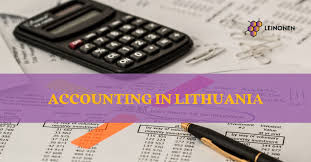Crypto Asset Reporting: The DAC8 Directive – What You Need to Know and How to Prepare
- V K
- Jul 24
- 3 min read
The European Union’s DAC8 directive is set to transform crypto asset reporting, introducing mandatory transparency and compliance requirements for businesses and individuals involved with crypto transactions. As digital assets become mainstream, the directive aims to tighten tax rules, combating evasion and ensuring fair competition. Here’s what you need to know—and how to proactively prepare.

What Is DAC8?
DAC8 is the eighth amendment to the EU’s Directive on Administrative Cooperation in taxation, specially focused on crypto-assets. Beginning in 2026, it requires crypto service providers and certain businesses accepting crypto payments to report detailed information on crypto-to-fiat conversions and other relevant transactions to national tax authorities.
Key Requirements Under DAC8
Mandatory Reporting:All EU-based crypto-asset service providers (CASPs), including exchanges, wallet providers, and platforms, must collect and report information on both domestic and cross-border crypto transactions.
Scope:Covers most crypto-assets, including cryptocurrencies (like Bitcoin and Ethereum), stablecoins, some NFTs, and tokens. Both centralized and decentralized assets are included if there’s any intermediary facilitating transactions.
Who Is Affected:
Crypto exchanges, wallet providers, and crypto startups
Businesses accepting crypto as payment for goods/services
Freelancers and micro-enterprises transacting in crypto
Types of Reportable Data:
User/customer identity (including name, address, tax identification number, and date/place of birth for individuals)
Type and amount of crypto asset involved
Dates and values of transactions, converted to fiat currency
Wallet or account identifiers
Reporting Frequency:Annual reporting is required, with the first compliance period starting in 2026 (data collection begins January 2026, first submission by January 31, 2027).
Why DAC8 Matters
Tax Transparency:The directive aims to deter crypto-related tax evasion and ensure crypto assets are taxed fairly, closing loopholes and aligning with traditional asset reporting practices.
Automatic Exchange of Information:Data reported under DAC8 will be automatically exchanged by tax authorities throughout the EU, making tax enforcement more robust and consistent.
Global Trend:DAC8 aligns closely with the OECD’s Crypto-Asset Reporting Framework (CARF), meaning international businesses may face similar obligations elsewhere.
How to Prepare for DAC8
1. Review Business Activities
Analyze whether your business or freelance activities fall under the CASP definition.
If you accept or pay in crypto—even occasionally—assume reporting obligations will apply.
2. Upgrade Record-Keeping & KYC
Implement robust Know Your Customer (KYC) procedures for all users and clients.
Ensure your systems can collect, validate, and securely store the customer and transaction data required for compliance.
3. Update Accounting and Tax Software
Choose or adapt accounting solutions to capture crypto transaction details, value conversions, and link transactions to users.
Ensure data is exportable in formats suitable for annual reporting.
4. Map Transaction Flows
Identify all wallet addresses and transaction types—crypto-to-fiat, crypto-to-crypto, inbound, and outbound—that will require reporting.
5. Educate Your Team
Train compliance, finance, and IT staff on new DAC8 requirements and timelines.
Stay updated on any national guidance or additional member-state rules.
6. Prepare for User Communication
Inform clients and customers that their crypto holdings and transaction data will be reported to tax authorities, improving transparency and managing expectations.
Important Considerations for High-Value and Cross-Border Use
Transaction Limits:High-value crypto transactions will be especially scrutinized, with detailed reporting on origin, destination, and beneficiary.
Cross-Border Operations:Any activity with users in other EU countries must be individually reported, in line with DAC8 cross-border exchange rules.
Service Restrictions:Some crypto businesses may face new licensing, ongoing reporting, and compliance audit requirements as a result of DAC8—plan for potential operational adjustments.
Prepare Now, Avoid Penalties Later
The introduction of DAC8 represents a major compliance milestone for businesses involved in crypto and blockchain. Preparing now—by updating systems, training teams, and ensuring all required data is captured—will prevent future penalties and keep your operations ahead of the regulatory curve.



Comments